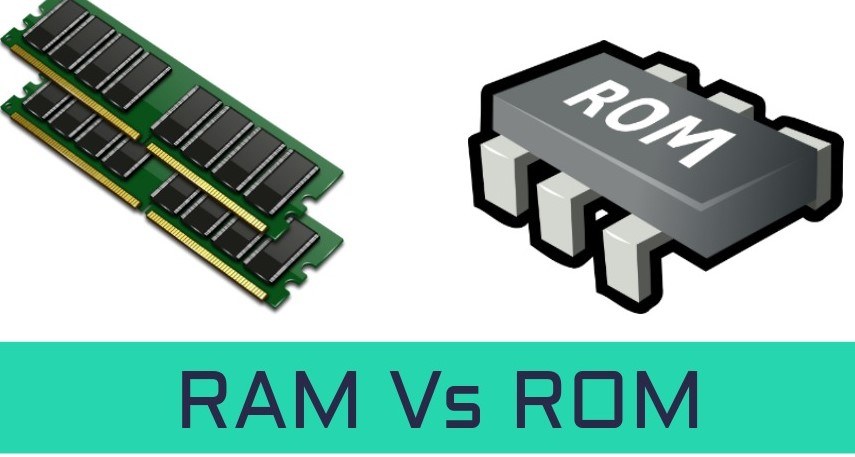RAM and ROM are the internal memory of the computer. Where RAM is temporary storage and ROM is the permanent storage of the computer. There are many differences between RAM and ROM, but the basic difference between ram and rom is that RAM is a read-write memory and ROM is a read-only memory. Let’s read!
RAM:
RAM is random access memory; this means that the CPU has direct access to any address location in RAM memory. RAM is the computer’s fast-access memory. It temporarily stores data.RAM is a volatile memory. RAM stores data until power is turned on. Once the CPU power is off, all data in the RAM will be cleared. The data that must be processed must be in RAM.
The storage capacity of RAM ranges from 32 MB to 12 GB. RAM is the fastest and most expensive memory on your computer. This is a computer’s read-write memory. The processor can read instructions from RAM and write the result to RAM. Data in RAM can be modified.
Also read: Difference between Domain and Hosting
Types of RAM:
There are two kinds of RAM Static RAM and Dynamic RAM:
Static RAM:
Static RAM is a type of power supply that requires continuous flow to retain the data in it. It is faster and more expensive than DRAM. It is used as a computer cache.
Dynamic RAM:
Dynamic RAM needs to be refreshed to preserve the data it holds. It is slower and cheaper than static RAM.
ROM
ROM is a read-only memory. The data in ROM can only be read by the CPU, but cannot be modified. The CPU can not directly access ROM memory and must first transfer data to RAM before the CPU can access the data from RAM.
ROM Stores the instructions required by the computer during Bootstrapping (the process of starting the computer). The contents of ROM cannot be modified. ROM is a type of nonvolatile memory that retains data inside the ROM even when the CPU is powered off.The capacity of ROM is smaller than RAM, slower than RAM.
Types of ROM:
There are many kinds of ROM as follows:
PROM: Programmable ROM, it can be modified only once by the user.
EPROM: Erasable and Programmable ROM, the content of this ROM can be erased using ultraviolet rays and the ROM can be reprogrammed.
EEPROM: Electrically Erasable and Programmable ROM, it can be erased electrically and reprogrammed about thousand times.
Comparisons:
| Terms | RAM | ROM |
| Basic | It is a read-write memory. | It is read-only memory. |
| Use | Used to store the data that has to be currently processed by CPU temporarily. | It stores the instructions required during bootstrap of the computer. |
| Volatility | It is a volatile memory. | It is a nonvolatile memory. |
| Stands for | Random Access Memory. | Read Only Memory. |
| Modification | Data in ROM can be modified. | Data in ROM cannot be modified. |
| Capacity | RAM sizes from 32 MB to 12GB. | ROM is comparatively smaller than RAM. |
| Cost | RAM is a costlier memory. | ROM is comparatively cheaper than RAM. |
| Type | Types of RAM are static RAM and dynamic RAM. | Types of ROM are PROM, EPROM, EEPROM. |
Summarized RAM and ROM:
- The main difference between RAM and ROM is that RAM is basically a read-write memory and ROM is a read-only memory.
- RAM Temporarily stores data that the CPU currently needs to process. On the other hand, ROM stores the instructions required during Bootstrap.
- RAM is a volatile memory. However, ROM is the non-volatile memory.
- RAM stands for Random Access Memory, and ROM stands for Read Only Memory.
- On the one hand, the data in RAM can be easily modified, the data in ROM is hard or never to be modified.
- RAM can be from 32MB to 12GB, while ROM is always smaller than RAM.
- RAM is more expensive than ROM.
- RAM can be divided into static RAM and dynamic RAM. On the other hand, ROM can be divided into PROM, EPROM, and EEPROM.




